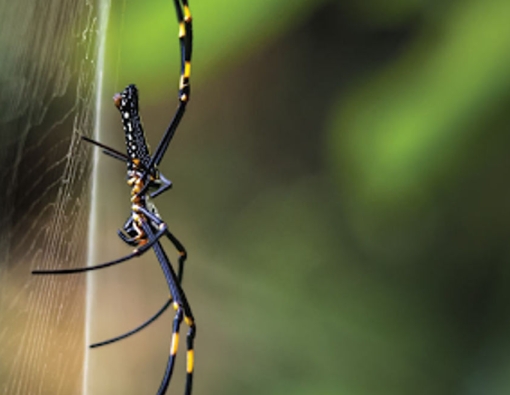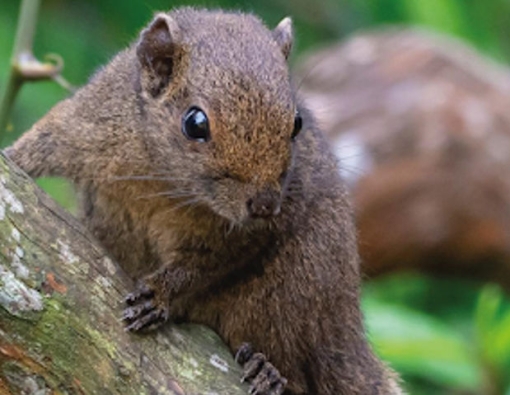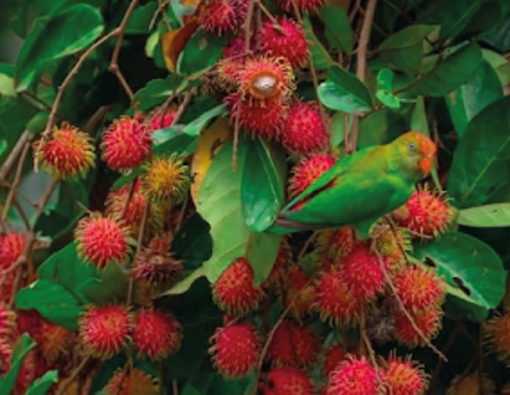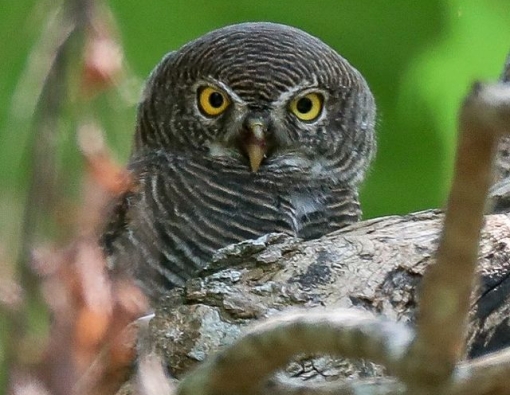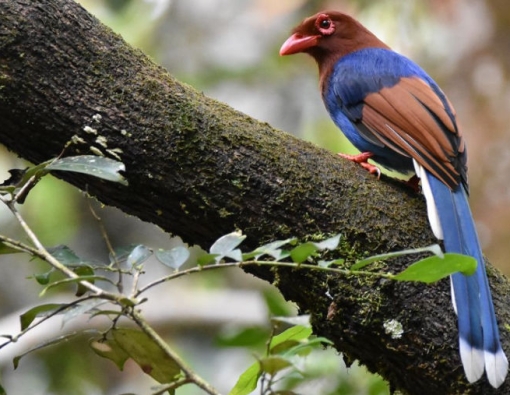Sinharaja Rain Forest
Explorer by Mahoora Camps - Sinharaja Rain Forest Sri Lanka

Private Tented Safari Camp Sinharaja Rain Forest
There is no better place in Sri Lanka for a bird enthusiast than the Sinharaja Rainforest. This virgin rainforest is a designated UNSECO World Heritage Site and Biosphere Reserve, due to the high degree of endemism found in the plant, bird and reptilian life that call it home.
Sinharaja Rainforest
Designated as a UNESCO Biosphere Reserve in 1978 and then a UNESCO World Heritage Site in 1988, Sinharaja is one of the best biodiversity hotspots in Sri Lanka. It is a frequently visited nature reserve that has a colorful mythological past.
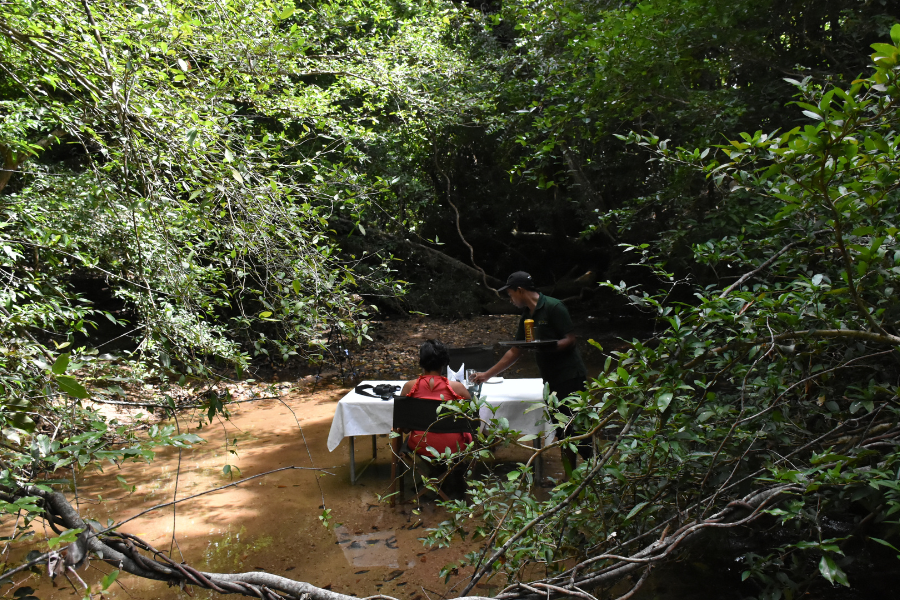
This rainforest is intrinsically linked to the legends of the first Sri Lankans;
in fact the name Sinharaja derives from the Sinhalese ‘kingdom of the lion’.
It is said that the Sinhalese race was born out of the union of the princess
and the lion king and it is believed that they had lived in Sinharaja itself.
The forest covers an area of approximately 11,200 hectares, measuring 21 kilometres from east to west and from north to south just less than four kilometres. The Sinharaja Rainforest is situated in the southwest lowland Wet Zone of Sri Lanka and the elevation ranges from 200 to 1,300 metres. It is noted for being a habitat for 95 percent of the endemic birds found in Sri Lanka.
Private tented safari camping experience in Sinharaja
2 Nights/ 3 Days
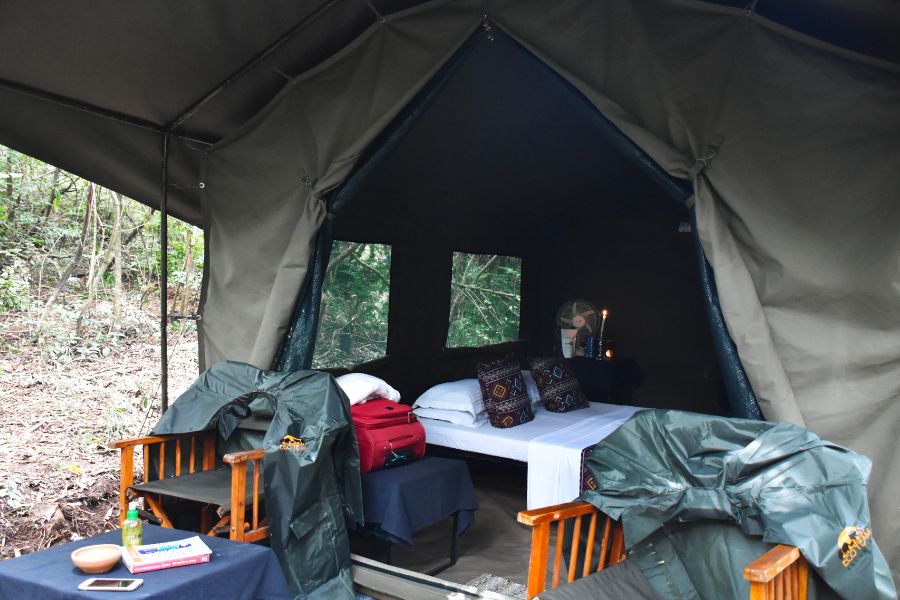
Explorer by Mahoora is a highly unique and immersive experience of living with untamed Sri Lankan wildlife inside National Parks, Nature Reserves and on the borders of National Park/ Nature Reserves across the country. Our Private Tented Safarsinha01i Camp Experience in Sinharaja, isolates you in a virgin age-old rain forest.
Being one of the last remaining and least disturbed biodiversity hotspots in Sri Lanka, you are likely to encounter rare sightings of fauna and flora alike.
The magical setting in the silent wilderness where rustic flame torches light up and roar to the tune of the wind while the campfire dances alongside, under a starry sky… this is the place to sit back and relax while we take care of you.
All food is freshly prepared at our campsite with an exclusively designed menu for our guests.
Explorer by Mahoora is for the adventurer who is looking for a sense of comfort and glamour in the midst of wilderness. The tent (15.6’x 8’) is equipped with a bedroom and an en-suite bathroom along with a private veranda/porch outside the tent.
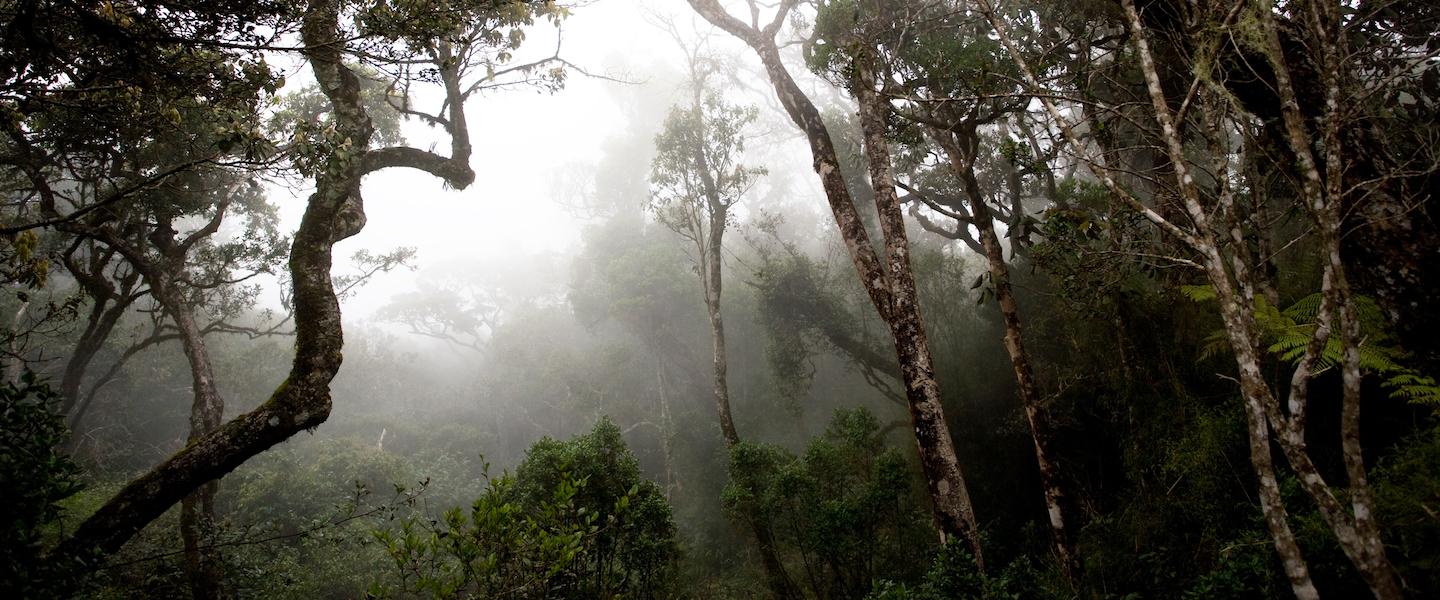
Itinerary
Schedule for Day 1
Arrival at pre-agreed meeting point at 12.30 hrs.
Lunch at Explorer by Mahoora campsite.
Forest walk after lunch.
A spectacularly varied walk that takes you through a rural village and scenic territory including a picturesque waterfall.
Back to the campsite: relaxation & leisure.
BBQ dinner around the campfire.
BBQ dinner around the campfire.
BBQ dinner around the campfire.
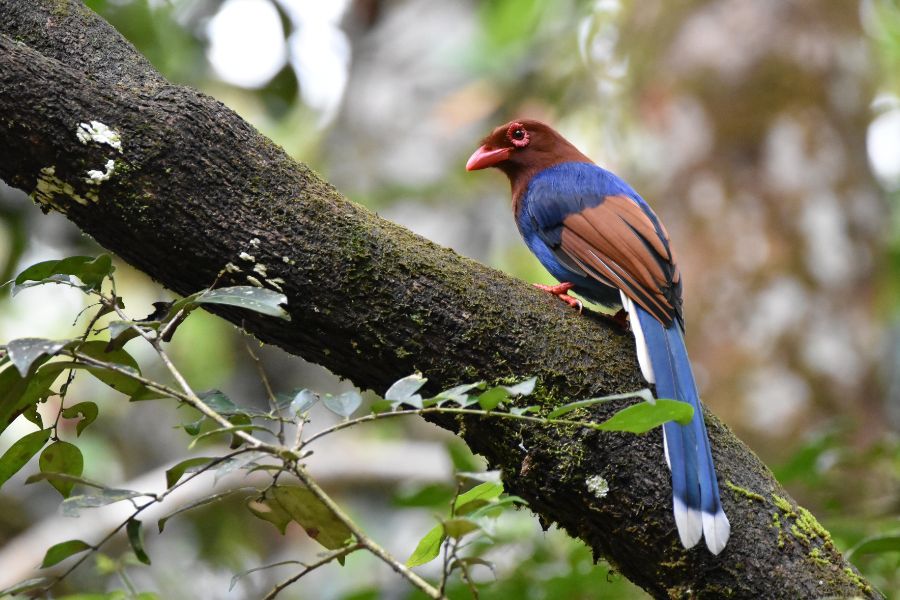
Fauna and Flora in the Sinharaja Rainforest Reserve
The Sinharaja Rainforest will leave a nature enthusiast quite bedazzled. Birders particularly will have an astonishing range of avifauna to observe.
The rare birds are the Red-faced Malkoha, the Sri Lanka Blue Magpie, the Ashy-headed Babbler and the White-headed Starling. The Green-billed Coucal is considered the rarest. Another interesting display is the presence of mixed species of foraging bird flocks, which is a phenomenon commonly found in rainforests. 100 flocks have been systematically observed, and studies have revealed that some flocks contained 48 species including 12 endemics.
Herpetologically, Sinharaja will not disappoint. The Green Pit Viper and Hump-nosed Viper are commonly found in Sinharaja and are endemic. Other endemics include the Torrent toad and the Common House toad. The Wrinkled frog and the Sri Lankan Reed frog are also found here. Green Garden Lizards are commonly observed on nature treks. Calotes Liolepis is an arboreal species and the rarest of all agamids found on the island.
The flora of Sinharaja displays a high degree of endemism. Of the 211 woody trees and lianas identified, a staggering 139 (66 percent) are endemic to Sri Lanka. Out of the 25 ferns which are endemic to the island, 13 have been recorded in the Sinharaja Rainforest. The total vegetation density has been estimated to be around 240,000 plants per hectare.
Sinharaja Forest Trek: North to South Weddagala to Lankagama via Singhagala
Total Distance: 22 km (With an option of reducing it to 18 km)
Duration: Approx: 7 hours
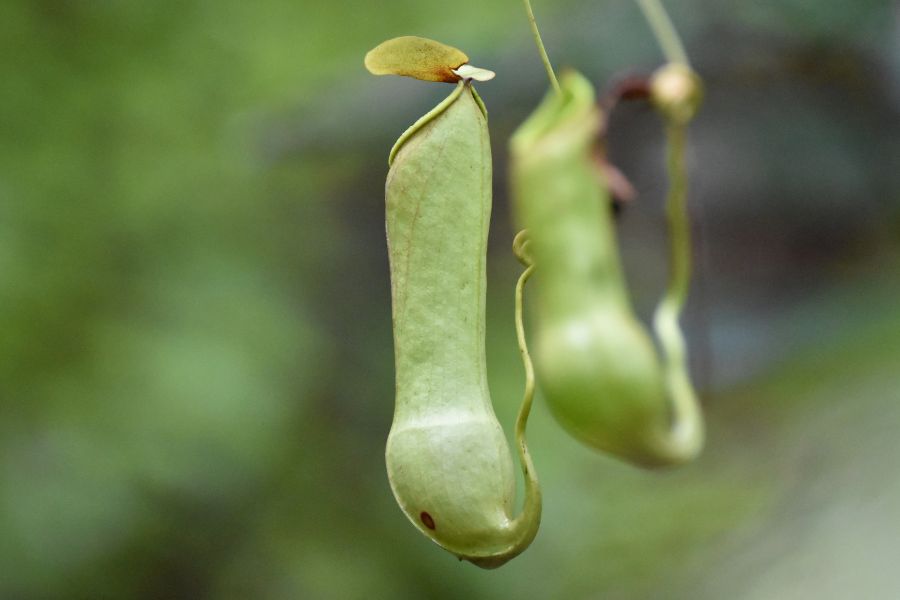
Sinharaja Forest Reserve has been designated as a UNESCO Natural World Heritage Site, UNESCO Biosphere Reserve, and also a Biodiversity Hotspot by the International Union for Conservation of Nature (IUCN).
Sri Lanka blue magpieAll these titles highlight the importance of the Forest Reserve in terms of its exceptional biodiversity as well as its fragility. Birding in Sinharaja is particularly interesting since it is home to 95% of the endemic birds of Sri Lanka.
Trek from Weddagala to Lankagama
We take a journey through the picturesque paths and sparkling streams of Sinharaja, where placid underbrush lie in wait for the appreciation of all who wish to pander in a voyage to the serene and lush wilderness of Sri Lanka’s legendary rainforest, a hotspot of endemic species which includes over 50% of Sri Lanka’s endemic trees, mammals, birds, butterflies, reptiles, insects and rare amphibian species.
Start the tour early morning at 6.30 am from our Mahoora Tented Safari Camp in Singharaja (Altitude 302m) and continue through the jungle with the sound of birds chirping while crossing sparkling streams and enjoying the fresh air around you.
Journeys through the jungle can vary from soft and moderate treks to short steep climbs. Please refer to our grading guidelines (to be linked) for more information on difficulty levels. Overall, we would classify the entire trek as a Moderate Trek.
The first section of the journey that starts from the camp leads along a dirt track to the Kudawa Research Centre (Altitude 520m). The best part of this trail is that you get to observe the birds of Sinharaja in all their splendour. During early morning and late evening, there is a very high chance of coming across Mixed Species flocks or the Bird Wave which is a magnificent sight and will provide you with an opportunity to observe some of the rarest birds of Sri Lanka such as the red-faced Mal-Koha, Blue Magpie etc.
Red faced mal kohaThe Sinhgaraja Bird Wave is the largest and longest studied Mixed Feeding Bird Flock in the world. Up to 41 individuals have been recorded in one flock. Your naturalist guide will help you to spot and identify these magnificent birds. Since the dirt track is fairly broad unlike the rest of the trail, it is easy to spot the birds and butterflies.
The distance up to the research centre from the starting point is about 5 km and it’s a soft trail along the dirt track. It finishes at the research centre and we cross a large stream and continue along the trail, which is now a narrow footpath.
The next 5 km of the trail has occasional irregular sections, but it is more or less a flat, easy walk. This could be taken as the second part of the trek. We continue to head southward passing a few turning points leading to interesting locations. A large complex of caves known as “Gallen Yaya” and “Koskulana Peak” are just two of them.
In the third section of the trek which is about 4km, we cross quite a few streams, go past dense forest patches to reach Singhagala. The trail will become more irregular, with brief ascents and descents, along with broad flat sections.
The last section of the trail to the Singhagala (Lion's Rock) is a hard climb of about 500m. This section is the most challenging of the entire trail. About 200m before the summit, the trail goes through a small cave which is an ideal spot to take a short break. The summit point is about 9km from the research station and about 14km from the start.
At the summit, you will be able to enjoy picturesque and breathtaking views of the forest, which is worth the climb and an experience of a lifetime. (Altitude 740.6m)
Start the descent from Sinhagala and continue on the trail southwards through the dense forest on a narrow footpath. After about 4km, you may hear the chanting from a temple, which tells you that we are almost there.
We reach by late afternoon and you will get to enjoy a refreshing bath in the sparkling and almost magical stream at the end of the trek. A short walk towards the Lodge takes you to a warm cup of tea, a piping hot dinner and a comfortable bed awaiting you. You might want to witness the local village life along the way. (Altitude 228.5m). We also have the option of organizing a local lorry for the last leg of the journey which is about 4km.
Your Accommodation for Tonight
We will spend the night in a simple, small local Lodge in a fantastic location with views of the forest and sparkling streams all around.
The Lodge has spacious rooms equipped with hot and cold water. The kitchen serves delicious Sri Lankan style meals. Every room has a large comfortable bed with a mosquito net and a fan.
Enjoy dinner near a log fire with incense burning in the night.
Experience the sunrise at dawn with the mist clearing over the forest which is a beautiful and almost magical sight.
We leave after breakfast to the next destination.
The Sambar deer, Mouse Deer, Barking Deer, Brown Mongoose and Golden Palm Civet are the mammalian species most commonly seen. The Purple-faced Leaf Monkey is virtually omnipresent as well. It is estimated that 15 Sri Lankan Leopards and a small herd of Sri Lankan Elephants also inhabit the forest but sightings are exceedingly rare.
Facts
A tent (15.6’x8’) with accommodation, an en-suite bathroom, and a private veranda/porch
Tented accommodation with raised beds with freshly laundered bed linens and a bedside table along with basic amenities
Fully-sealed tent with ventilation nets
Equipped with a shoe rack and two foldable arm chairs
One rechargeable table top fan is provided in the bedroom
A rechargeable lantern is provided for illumination
The veranda/porch includes two chairs and a coffee table
Mahoora tented safari camps Sri Lanka.

Important Links
Resort Locations
Mahoora Tented Safari Camps,
20/63,
Fairfield Garden,
Colombo 08,
Sri Lanka
(10800)
Booking & Query
P. +94 (0)702228222
Partner Properties




